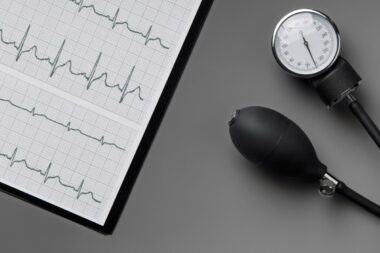Are you feeling overwhelmed and struggling to cope with life’s challenges? Dealing with adversity is an essential part of life, but it can be challenging to know where to start.
Building resilience is key to overcoming adversity, and there are many coping strategies that you can use to develop this skill.
While it may come easier to some than others, resilience is a skill that you can learn and develop with time. In this article, we’ll explore some of the most effective coping strategies and how you can use them to build resilience positively.
What Are Coping Strategies and Why Do We Use Them?
Coping strategies are ways that people adopt to deal with their stress, frustration, anger, and other uncomfortable emotions.
We all experience negative emotions that are hard to deal with, everyone has their coping mechanisms and strategies.
However, they’re not always positive, constructive, or healthy. This is why we’ll go over the types and styles of coping strategies as well as how to improve the ones you have.
What Is Resilience?
Resilience is the ability to bounce back from adversity and cope with the stresses around you healthily and positively.
It’s a crucial skill that helps you navigate difficult times, build stronger relationships, and achieve your life goals.
Not to mention, resilient people are more likely to handle stress in a better way as well as overcome anxiety, depression, and other stress-related symptoms.
What Are The Factors That Affect Resilience?
Many factors influence your level of resilience, which are as follows:
- Genetics: Some people are more naturally resilient than others thanks to their genetics.
- Environment: Growing up in a supportive and nurturing environment can help build higher levels of resilience.
- Life Experiences: Previous experiences with adversity and how the individual has overcome them contribute to how well the individual learns to cope with difficulties.
- Coping Strategies: The strategies someone uses to cope with their stress can impact their level of resilience. Effective coping strategies include seeking social support, practicing mindfulness, and engaging in physical activity.
Coping Styles
There are two major styles of coping: Problem-focused and emotion-focused.
1. Problem-focused Coping
Problem-focused approaches have the end goal of eliminating the stressor. In other words, they deal with the problem at the source.
It’s a good strategy if you have a degree of control over the situation that’s causing you stress.
For example, if you fight with your partner almost daily, you can take a problem-focused coping style by seeking counseling, setting boundaries, or ending the relationship.
2. Emotion-focused Coping
Unfortunately, you don’t always have control over the factors that cause you stress. In situations like this, you can adopt an emotion-focused coping style, which focuses on how you respond to the source of your stress.
For example, you’re under 18, live with your parents, and have an overbearing mother. In that case, you can practice deep breathing, journal your feelings, or talk to a friend about it.
What Pushes Us to Adopt Coping Strategies?
Coping strategies help regulate the side effects that stress causes. By nature, we go into a fight-or-flight mode when faced with stress, which is the role of our sympathetic nervous system.
Back in the day, these threats used to be life-threatening situations like facing a wild animal or protecting yourself from a natural disaster.
These days, however, stressors are things like being unable to pay your debt or an important deadline.
Our body can’t distinguish between the real dangers we’ve faced in the past and the emotional stress that we face in this day and age.
In turn, this leads us to face several issues that would have been helpful, biologically speaking. However, they do more harm than good now that we live in a civilized society with housing and numerous facilities.
1. Negativity
Negativity, whether external or internal, can push us to use coping mechanisms—and not always healthy ones.
Do you often feel your palms sweating, experience palpitations, or feel extremely overwhelmed with worry?
Many people dealing with negativity go through episodes of anxiety or even panic attacks.
Try to engage in meditation or breathing exercises to cope with these symptoms healthily. Any grounding technique will do the trick.
Also, it’s crucial to learn how to reframe your cognition. Cognitive reframing, or reappraisal, helps you think about a problem in a different, more positive light.
For example, if you didn’t land a promotion that you were ardently waiting for at work, you might think that this is the worst blow you have gotten to your career progression.
However, think of it as a buffer to further learn technical or soft skills. Moreover, try to look at the positive that may come from it, like having more time to spend with your family, engaging in a personal hobby, or even learning a new skill like playing an instrument.
That way, you can process your negative feelings without having them affect your outlook on life.
2. Depression
Depression is a side-effect of unhealthy coping mechanisms and may be a cause. Although clinical depression requires professional help, you still can practice some routines to help you deal with it.
For example, you can keep a routine that helps you go through the motions without exerting executive functionality when it comes to thinking about them.
Moreover, staying physically active makes you feel more energized and releases feel-good chemicals like endorphins.
Finally, organizing your environment helps you feel like you’re more in control of your space. It also gives you a feeling of accomplishment that motivates you to keep doing beneficial things—ultimately pushing you toward a cycle of productivity.
3. Regret
Regret can induce self-blame and suck people into a vicious cycle. That’s why you should be mindful of the way that you talk to yourself.
You can also seek social support by talking about your feelings with family, friends, and loved ones. After all, the shortest path to alleviating symptoms of sadness and maximizing happiness is having strong social relationships.
It’s also important to remember to take care of yourself by eating well and sleeping at regulated hours.
Finally, you can opt for professional help or a support group to help you deal with your emotions by having the perspectives of others.
4. Abandonment
A common maladaptive coping mechanism when someone is facing abandonment issues is to leave before they’re left.
However, that’s a harmful approach to your social life and mental well-being. Social networks and interactions help make us feel connected and like we belong—both are important to development.
Not to mention, the benefits of a healthy social life include improving memory, cognitive functions, and even physical health.
So, instead of channeling your energy on abandoning people, you should exert that effort into refining your social circles.
5. Trauma
Trauma responses are extremely common, and they’re subconscious ways that people cope with reliving a tough emotion.
This leads to plenty of reactions, including confusion, anxiety, agitation, dissociation, or exhaustion.
In severe cases, some individuals suffer from post-traumatic stress disorder (PTSD). In those cases, the individual might feel like they’re constantly reliving their traumatic experiences, even when they’re trying to deny, run away, or deal with them in healthy ways.
When you feel like you’re going through the same traumatic experience, you might feel the need to fight, flee, freeze, or fawn.
All of these reactions don’t breed healthiness; you want to be able to identify your emotions, process them, express them, and ultimately, deal with them.
What’s the Difference Between Coping Mechanisms and Defense Mechanisms?
Although coping and defense mechanisms are sometimes used interchangeably, there’s a huge difference between them.
Coping mechanisms are strategies that an individual intentionally creates and uses to deal with their stress and uncomfortable situation. Since the person was mindful about choosing the way they deal with an issue, coping mechanisms are healthy and positive.
On the other hand, defense mechanisms are often subconscious and automatic. That’s why they often carry a negative connotation.
a. Adaptive Coping Mechanisms
Adaptive coping mechanisms are the ones you can use to empower you to either change a bad situation or build emotional resilience to adjust your responses to them.
Some examples of adaptive coping mechanisms include meditation, journaling, exercise, talking with a friend, taking a bath, or aromatherapy.
- Support: A good way to engage in adaptive coping is to resort to friends and loved ones. Having supportive people is an effective way to manage stress. It also helps you avoid maladaptive coping mechanisms like self-isolation.
- Relaxation: Any activity that aims to relax you would be an excellent resort. These include meditation, yoga, progressive muscle relaxation, listening to soft music, or sitting in nature.
- Problem-solving: Solving the problem at the root is one of the healthiest ways to deal with stress.
- Humor: Many people use humor to reduce the heaviness of hefty situations. It can prove very helpful in preventing you from becoming overwhelmed.
- Physical Activity: Physical exercise releases endorphins and increases dopamine and even serotonin levels. That’s why it’s one of the best ways to relieve stress and boost happiness. It can include anything—from yoga and walking to running, dancing, and swimming.
b. Defense Mechanisms (Maladaptive Coping Mechanisms)
Defense mechanisms are unhealthy ways to deal with stress. Typically, people who went through trauma or abuse as a child tend to adopt defense mechanisms.
These include using drugs, excessive drinking, turning a blind eye to the problem, binge eating, or isolating oneself.
- Escapism: To cope with stress and anxiety, you might want to withdraw from friends and family to isolate yourself. However, solitary activities like television, reading, or surfing the internet can worsen the negative repercussions of going through a stressful period.
- Unhealthy self-soothing: There’s nothing wrong with eating, social drinking, or playing video games. However, when you use these activities to self-soothe excessively, they can turn into maladaptive mechanisms.
- Risk-taking and compulsions: Some people may seek adrenaline rushes to cope with stress. This leads them to risky behaviors like gambling, unprotected sex, reckless driving, drugs, or even petty theft. These kinds of behavior are tremendously maladaptive.
- Self-harm: Trying to cope with trauma or anxiety can lead some people to self-harm. In the case that you feel the desire to do so, consider talking to a professional.
What’s the Difference Between Active and Avoidant Coping?
As the names suggest, active coping involves recognizing the source of stress and locking in a plan to change the situation or at least how you deal with it.
On the other hand, avoidant coping involves ignoring problems and not addressing the issues that inflict pain and stress on you in the first place.
How to Improve Your Coping Strategies?
You can work on your coping mechanisms by improving your adaptive coping strategies and fixing your maladaptive ones. Here are some tips on how to improve your coping strategies:
- Pinpointing stressors: Begin by pinpointing the reasons that cause stress to break down the process.
- Identifying current coping strategies: Think about the coping strategies you typically resort to when facing stress.
- Filtering adaptive and maladaptive ones: Divide your strategies into healthy and unhealthy ones to decide which ones you should get rid of and replace.
- Trying something new for maladaptive ones: Once you decide on the unhealthy defense mechanisms, try new approaches to replace them with healthier responses.
- Building habits: Turn your new, healthier approaches into habits by incorporating them into your daily schedule. For example, if you opt for meditation instead of drinking; make sure to meditate—even if only for five minutes.
- Getting help: If you find yourself having difficulties replacing unhealthy defense mechanisms with healthy coping ones, think about talking to a therapist.
Final Thoughts
In brief, building resilience requires a lot of effort, self-awareness, and practice. Still, as long as you’re willing to learn and adapt, you’ll always find it in yourself to improve and become a better person—both for your own sake and those around you.
By incorporating the strategies and tips discussed in this article, you can enhance your capability to bounce back from setbacks and overcome challenges most healthily.
Remember that it’s a process that takes time and patience and that requires a supportive environment.
About the Author:
 Cinim is an integrative health and research institute. We create evidence-based mental health programs that help people live happier, more fulfilling lives. For more information, please visit: www.cinim.org
Cinim is an integrative health and research institute. We create evidence-based mental health programs that help people live happier, more fulfilling lives. For more information, please visit: www.cinim.org
Image Credit: Freepik
This article is published by our independent team of health and wellness pundits that publish original and informative content to empower readers to take charge of their health and embark on a physically, mentally, and emotionally balanced lifestyle.





































